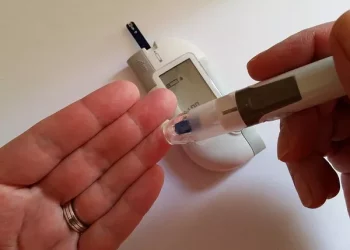A newly recognized form of diabetes, Type 5, has emerged, linked to chronic malnutrition and obesity. This condition primarily affects young, malnourished individuals in low- and middle-income countries, with an estimated 20 to 25 million people impacted globally, particularly in regions of Africa and Asia.
Dr. Ajay Agarwal, Senior Director of Internal Medicine at Fortis Hospital in Noida, explains, “Malnutrition-related diabetes, distinct from both Type 1 and Type 2, is now officially named Type 5 diabetes. This disease typically affects lean and malnourished teenagers and young adults.”
What Are the Causes of Type 5 Diabetes?
Type 5 diabetes occurs in individuals with a body mass index (BMI) below 18.5 kg/m². According to Dr. Agarwal, the condition is more prevalent than tuberculosis and comparable to the rates of HIV/AIDS, though its recognition as a distinct disease has been delayed. Unlike Type 2 diabetes, people with Type 5 diabetes have lower levels of glucose production in the liver. Body scans also reveal significantly lower body fat percentages, often as low as 10-12%, compared to the 20-25% found in healthy adults. Additionally, those affected typically consume insufficient amounts of proteins, fiber, and essential micronutrients.
Recognizing the Symptoms of Type 5 Diabetes
The symptoms of Type 5 diabetes can be easily confused with those of other types. Dr. Agarwal points out that key signs include extreme fatigue, unintended weight loss, and frequent infections. These symptoms often go unrecognized, leading to delayed diagnosis. “Body scans show that individuals with Type 5 have fat percentages as low as 10-12%, in stark contrast to the 20-25% observed in healthy adults,” he adds.
Managing and Preventing Type 5 Diabetes
While no definitive treatment guidelines are available, Dr. Agarwal suggests that a combination of small insulin doses and oral medications may be beneficial. Nutritional adjustments are also crucial, with higher protein intake and lower carbohydrates being essential. Micronutrient deficiencies should also be addressed.
In summary, while Type 5 diabetes shares some similarities with other forms of diabetes, it requires distinct treatment approaches. Dr. Agarwal stresses that recognizing the condition and providing appropriate care is critical for improving outcomes for those affected.
Related topics:
Gestational Diabetes May Increase ADHD Risk in Children: Study Finds
Digital Lifestyle Program Reduces Diabetes Risk by 46%, Study Finds
The Role of Food Additives in Type 2 Diabetes Risk: A Growing Concern























